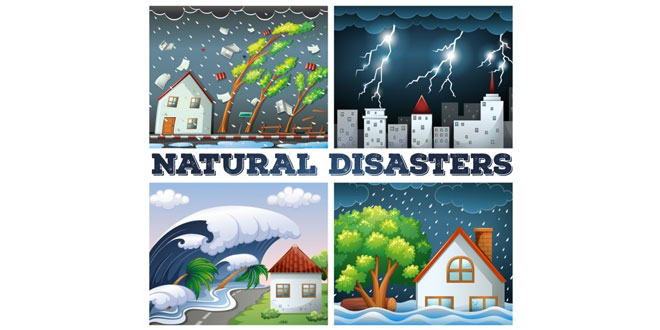Question: What are volcanoes?
Answer: Cracks in the earth’s crust out of which molten magma comes out is called volcanoes.
Question: Name three types of volcanoes?
Answer: The three types of volcanoes are:
- Active Volcanoes
- Dormant Volcanoes
- Extinct Volcanoes
Question: Give one example each of an active and an extinct volcanoes.
Answer: The examples are:
- Active Volcanoes – Mount Fuji
- Extinct Volcanoes – Zuidwal Volcano
Question: What is an earthquake? How is it caused?
Answer: A sudden movement of a part of the Earth’s surface is called earthquake. They are caused by severe shock waves that travel through the solid rocks from the Earth’s crust to the surface.
Question: Give one example of an epicentre and an aftershock of an earthquake in India.
Answer: The example is:
During the Gujarat earthquake of 2001, Bhuj was the epicenter. In the Kashmir earthquake of 2005, aftershock were felt for many days.
Question: What does a seismography measure?
Answer: Seismograph is used to measure and record the intensity, direction and duration of earthquakes.
Question: Write one difference between tidal wave and a tsunami?
Answer: Tidal Wave – It is the rise and fall of sea level. It is caused by the gravitational forces acting between the sun, moon and earth.
Tsunami – These are caused by undersea earthquakes, volcanic eruptions, landslides etc.
Question: Describe the three kinds of volcanoes.
Answer:
Question: What are focus, epicenter and aftershocks?
Answer:
Question: Mention any three effects of an earthquake.
Answer: The three effects of an earthquake are:
- An earthquake, especially a strong one, always causes destruction of property. Buildings may develop cracks or even fall down. Roads and bridges get damaged. Trees get uprooted. Many lose their lives too by getting trapped under the heavy slabs that have fallen etc.
- An earthquake, especially an undersea one, can cause other disasters like tsunami.
- It can cause landslides and fires.
 Class Notes NCERT Solutions for CBSE Students
Class Notes NCERT Solutions for CBSE Students


